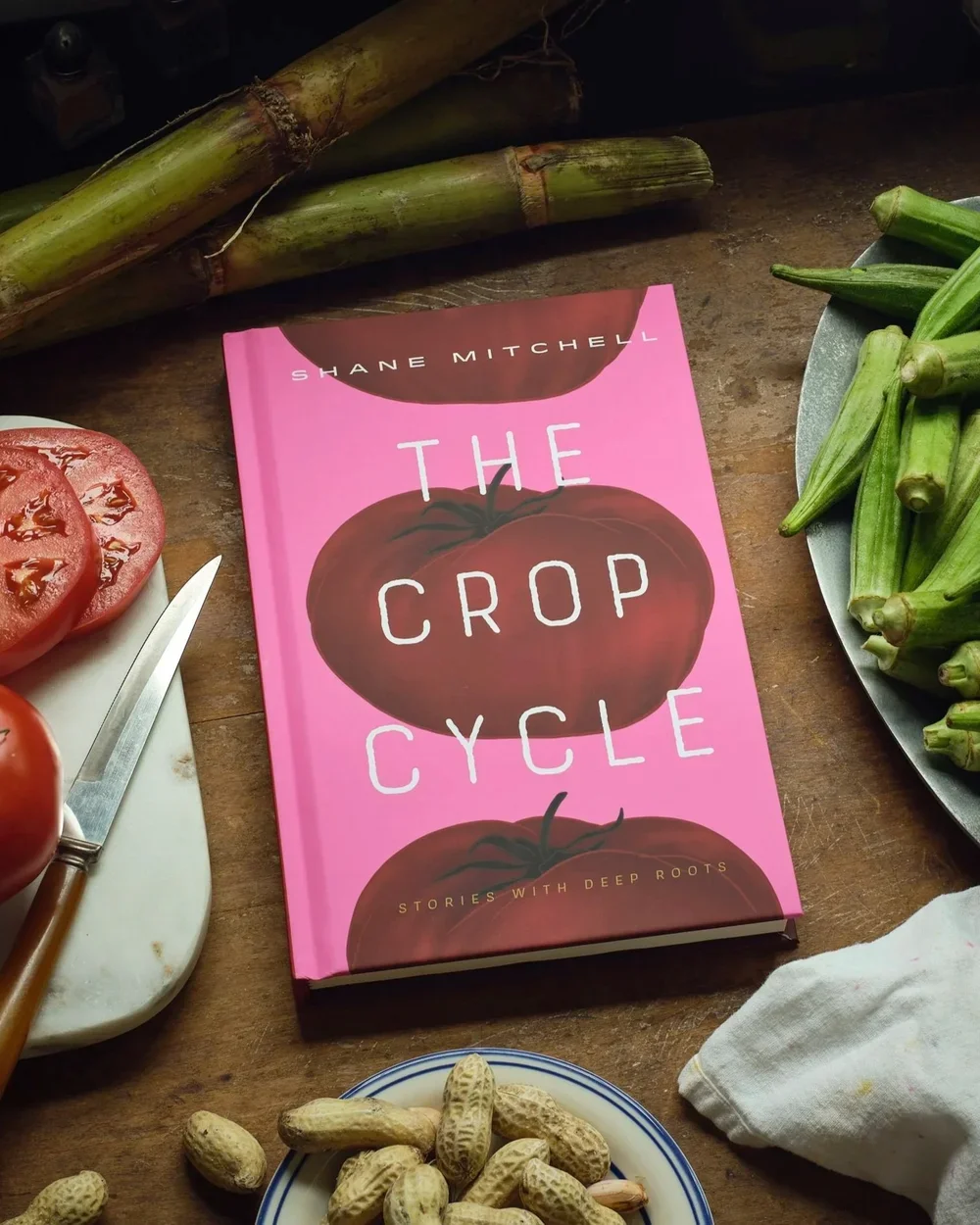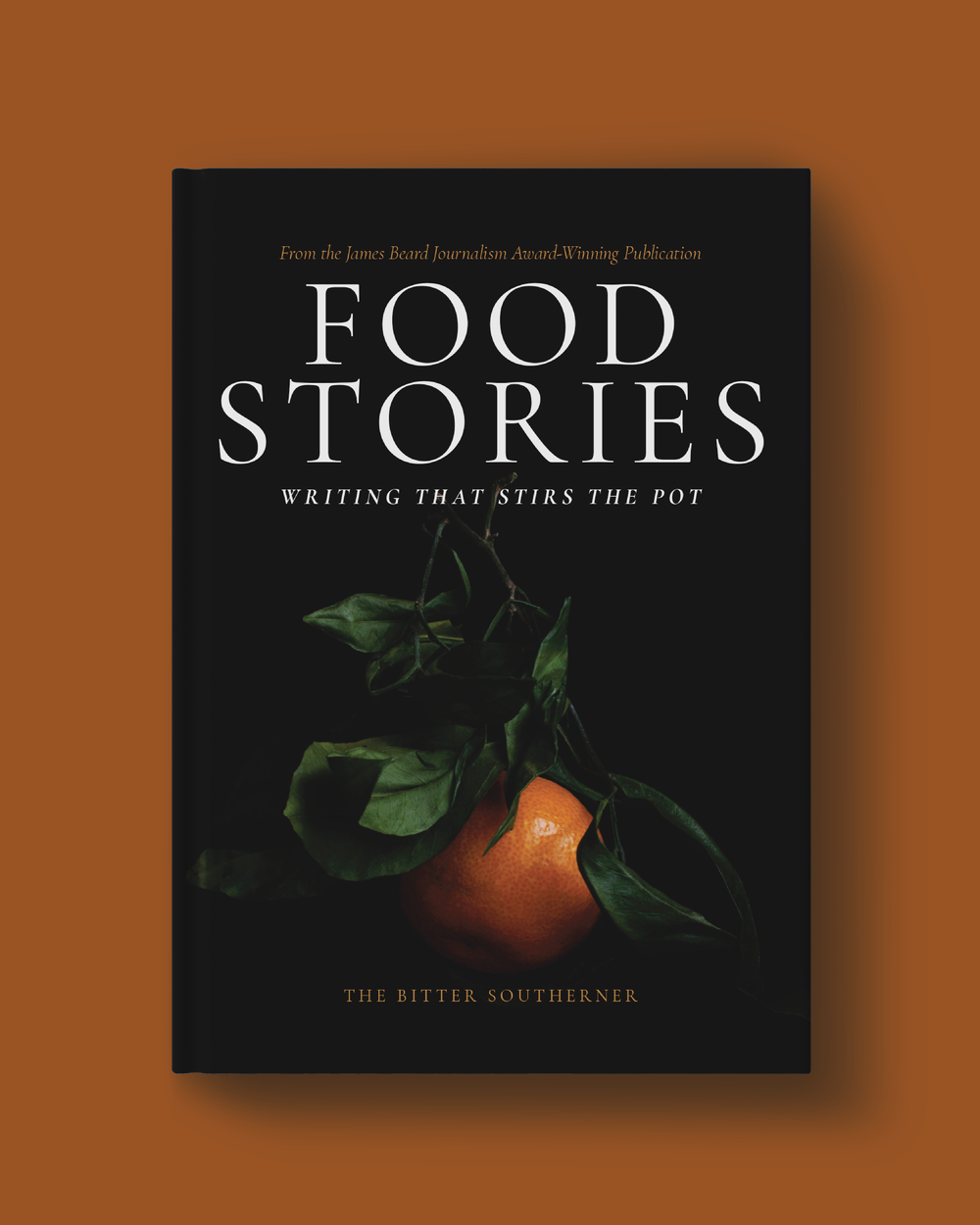Words by Caroline Hatchett | Illustration by María Jesús Contreras
Miami’s famous casserole is a dish meant to be shared.
(That’s where I went wrong.)
October 14, 2025
have a recipe card, written in my great-grandmother’s neat script, for black beans and rice, courtesy of Olga Batista, a Cuban-born lunchroom cook in Pahokee, Florida. My mother learned to make arroz con pollo and compose the famous “1905 Salad” recipe printed on matchbooks at the Cuban-Spanish Columbia Restaurant, where we dined on every trip to St. Augustine. On my left ring finger, there’s a half moon scar, sliced into my flesh as I prepared ropa vieja for my parents while on break from college. I have drunk communal, achingly sweet colada from a plastic thimble. But I did not know arroz imperial.
Last summer, I was reading How to Leave Hialeah, a short-story collection by Jennine Capó Crucet. She flicked those two words — arroz imperial — into the narrative and offered few details. All I could tell was that it was some kind of Cuban rice dish sold by the pound, the stuff of Thursday lunch specials and celebrations, too, a tether to home, a food so commonplace it did not merit explanation.
It shook loose my version of events, this dish I never ate.
I lived in Miami for three years in my mid-20s. William, my soon-to-be husband, had gotten a full ride to the University of Miami’s law school. This was 2007, not even a year since we left college and transplanted our lives from Athens, Georgia, to New York City. I was raised by frugal people, and it sounded like an adventure. So we boxed the contents of our walk-up apartments in Manhattan, loaded a U-Haul, and drove south on I-95 until the highway ended and then drove 8 miles more to Metropolis Dadeland, a conjoined set of 26-story towers with two pools and a wisp of a bay view. We bought a Thomasville bedroom set on credit, even though William’s father said we shouldn’t. I was hellbent on making a home — the type I had grown up in — with linen napkins, order, a few cherished antiques, a ban on television as background noise.
By day, I copyedited government-mandated Medicare magazines for insurance companies. I developed PowerPoints on how to manage chronic kidney disease. I once wrote an article on gonorrhea at an eighth-grade reading level. Medical writing was a miraculously Great Recession-proof business, if not quite the work I aspired to.
From my cubicle, May through October, I watched steel-wool clouds rush from the Everglades to Biscayne Bay and unload an unholy downpour on downtown. But just for a few minutes in the late afternoon, on this I could depend. At 5:55 p.m. I collected my tote and walked a half mile to the Government Center Metrorail station so I could catch the 6:07 p.m. train that would deliver me 11 miles south by 6:32 p.m. On the ride home, I rehearsed in my mind step-by-step how I would prepare dinner so that I could serve it by 7:30 p.m. Black beans and rice, baked macaroni and cheese, and pots of risotto sustained us.
I got quite good at it, this neurotic weekday ritual. My husband set the table for two. I made enough for four. And for a half hour each night, at the oak table from my childhood home with the white Villeroy & Boch plates from our wedding registry, I had William all to myself, all 6 feet, 3 inches of him, 136 pounds soaking wet, in need of a haircut. He washed the dishes and got back to work. In the morning, he slept in as I packed his leftovers, made breakfast, and brewed Café Pilon in an AeroPress. I caught the Metrorail back to work before he emerged from the covers.
At 24 I did not know how to be a wife, but I could cook. I thought that looked a lot like love.
The summer after my sophomore year of college, I had gone to Le Cordon Bleu in Paris to learn technique and French classics. After graduation, I fact-checked Zagat guides and checked off New York Magazine’s “Cheap Eats” restaurants one by one. In Miami, cooking six or seven nights a week, I started to form a worldview — a life — with food at the center. I read Michael Pollan and Mark Bittman and stopped buying factory-farmed meat, which, on an entry-level editorial salary, meant we were mostly vegetarian. I joined a CSA, whose boxes heaved with corn and tomatoes in spring. In summer, we gorged on mangoes and waited for the flesh of black sapote to ripen into rich custard.
I documented our meals on a blog: quinoa with beets and feta, panelle stacked with pesto and spinach, lemony carrot soup, butternut squash curry, roasted red pepper-wrapped halloumi. I posted poorly lit photos and earnest advice. I waited for comments, validation, from the ether.
Years later, when I reproduced those meals, William couldn’t recall eating them in Miami. Not a one. It reminded me of how small I felt living with a full-time law student who played husband a few hours a week. Eventually, I stopped asking him.
If I’m honest, I had an inkling that I had attached myself to a workaholic. But the man I followed to Miami picked black-eyed Susans out of strangers’ yards for silly bouquets. He proposed on the steps of the Met and bought me a Diane von Furstenberg dress with his first paycheck.
I grew up in a small Georgia town, where bank tellers asked after my mama. In college, I shared a room with five sorority sisters stacked in bunk beds and later an apartment where a dozen drunks would gather for hangover-easing bowls of cheese grits. In New York, William and I had run with a half-feral pack of University of Georgia graduates. We downed cheap tequila shots and rode the subway home at 2 a.m. We bought deli subs for picnics in Central Park. I made homemade costumes for Halloween parties and ate cheese crackers for lunch to save for girls’ night at Nobu.
In Miami I was holed up in a near-empty high-rise, across from a suburban shopping mall, splitting a single Dale’s Pale Ale so my husband could return to his studies promptly and unimpaired. More nights than I care to admit, I’d sit on our beige Berber carpet, hold my knees tight, and sob. Loneliness, my tormentor, was so foreign to me I did not recognize it.
Fifteen years later, arroz imperial dredged all that back up. I Googled the words and found what should have been a comfort: layered yellow rice, chicken fricassée, mayonnaise, and cheese. I searched newspaper archives and found a 1980s recipe from the Spanish language El Miami Herald that included elegant asparagus and almonds but not yet processed cheese. A decade later, a thick shell of mozzarella topped the now-definitive version, with deli ham and decorative swirls of ketchup as optional add-ons.
I called Mika Leon, a Miami chef whose grandparents fled the Castro regime in 1969, to find out what I’d missed. “It’s a post-revolution, Cuban immigrant dish,” she told me. Like the Cuban sandwich, arroz imperial was born in exile in Florida.
It’s also Miami’s greatest contribution to the American casserole canon. But make no mistake, arroz imperial is no dump and bake slop. Mika grew up ordering the dish from Blue Sky Food By the Pound, whose original recipe included fresh tomatoes, sherry, and sauternes — and two rice varieties among its 25 ingredients.
“You got screwed over, let me tell ya,” said Mika. For birthdays, the chef, who’s also a Latin food influencer and regular guest on Food Network, requests homemade arroz imperial in place of cake. It was the first recipe to go viral on her Instagram account. Miami has Reddit threads devoted to the best restaurant versions and where to buy enough for a crowd.
I asked Meg, my closest coworker during my Miami years, if she ever ate arroz imperial. Yes, she said, for every birthday at her mom’s house in Hialeah. Her dad used to secure a kid goat to roast in the backyard. After he died, arroz imperial became the centerpiece — both a creamy, carby joy and a reminder, perhaps, of who wasn’t at the table.
“Seven out of 10 times if you get invited to a party in Miami, you’re gonna find imperial rice on the menu,” Nydia Pichardo, a Miami home cook, chirps in a YouTube tutorial on the dish.
In the years I lived at Dadeland, I was rarely invited to parties. I tried to recall them all: a potluck at a law professor’s home, a birthday at an all-you-can-eat Brazilian steakhouse, maybe a Super Bowl party with chips and queso, a going away barbecue. They’re mostly fuzzy save for Fiorella Juarez’s birthday, for which her mom made a brilliant pot of ají de gallina. But a dinner party with arroz imperial? No, ma’am.
There are lots of reasons why my social life withered. Most of my friends lived north of town, and I lived south. I took the train, and couldn’t afford a cab if it got too late. My best friend in Miami, a sorority sister from college, was in grad school too, her schedule filled with classes, internships, and study sessions. William is an introvert who is slow at making new friends. I did not speak Spanish. Within a year of our move, Miami’s real estate bubble burst, and we never saw another occupant on our floor. In the years since, I thought I had fully diagnosed my Miami-era malaise. I was lorn, damn it, and depressed. But then arroz imperial sauntered, slick with mayonnaise, into my consciousness, and she demanded answers.
What had all that cooking been for if it made you more alone?
It’s never a simple thing for me, food. Those meals in Miami had saved me from boredom; they filled my evenings with pleasure, albeit brief. In re-reading my blog posts I could hear the beginnings of future me, a woman who makes meaning through eating. But I also ate and ate and ate and never filled up. I cooked as a daily devotion to the idea of domesticity, redemptive suffering in a half-baked marriage. Dinner was one of my few means of control. Be home by 7:30. See me and how I love you.
It did not work, the seeing part. And I did not tell my mama or sister or even myself how miserable that made me. The loneliness of law students’ spouses was so commonplace I did not think it merited explanation.
I don’t know that I could have done it any differently. But I should have bought that man cold cuts and white bread. He would not have starved. I wish I had consumed less Pollan, whose virtuous lessons I practiced with an unhealthy rigidity, add a dash of smugness. One fall, I ate so many collards and callaloo from the CSA that I ended up in the emergency room with kidney stones from a build-up of oxalic acid. Why, I thought, can’t all wives source whole tilapia from a local aquaculture outfit and clean the fish in their kitchens? Because, darling, you’ll find their fucking scales glued to your contractor-grade white walls and ugly quartz countertop for months.
I needed a good dressing down from a downhome casserole: Get over yourself, Caroline! But I fear that if I had met arroz imperial back then, my wounded, pretentious heart would have rejected her.
I also wish I had appreciated lunch, a luxurious hour each workday in a little office kitchenette. Meg and I brought back steam-table Indian — eight bucks for a pound of stewed okra, saag paneer, chana masala, and rice, plus a samosa. We ate nasi lemak from a tiny Indonesian restaurant, run by former cruise ship workers. We microwaved leftovers (so many leftovers), gossiped about our bosses, and teased each other gently. I thought that dinner with William had been most sacred, the brightest part of my day. That lie might have saved my marriage, but now I know that I was best loved at lunch.
Right before I left Miami, my coworkers surprised me with a coconut cake from Publix. It had a maraschino cherry in the center, and they had added red and yellow candy letters that spelled out: “Its OK 2 Be White.” I have a picture of me in the office kitchenette after eating a slice of that cake, my raincloud eyes fat with tears. I was their gringa with red curls gone wild in the South Florida humidity, a woman forgiven for wearing micro dresses as office attire, touching Meg’s hair, and tending to a husband over friendships.
Arroz imperial is my regret for having one foot out of the office at 5:55 p.m., and the other on the gas pedal of a U-Haul bound 1,300 miles north. William and I moved back to New York City as soon as he passed the bar exam.
But arroz imperial is regret with a remedy. This summer I met Meg for lunch at Blue Sky in a Hialeah strip mall. Next to pans of roasted chicken, yucca, and mashed potatoes, sat a half-full hotel pan of arroz imperial with its top layer congealed into a firm mass of paprika-dusted cheese. A single portion filled up a Styrofoam plate to overflowing. We sat down with two Coca-Colas and split the rice, making sure to equitably divide the cheese. “The best part!” said Meg. I hadn’t seen her for months, and we caught up on job searches, the joys and frustrations of middle age, and what we could not have known in our youth. We gossiped about our former bosses. The arroz imperial, frankly, was lackluster, and I did not care.
Mika had warned me that most restaurants now take shortcuts with the dish, so the chef sent me an arroz imperial recipe from her forthcoming cookbook that includes a decadent internal layer of cheese and mayonnaise, plus a full pound of chopped ham on top.
Back in New York, I texted friends for a last-minute, Wednesday-night casserole dinner. I infused homemade achiote oil. I bought bell peppers, onions, garlic, and chicken breasts from the Union Square Greenmarket. I pulled the fancy Burlap & Barrel sazón from my spice rack.
My doorbell rang in succession. There was Lisa, a mayonnaise-obsessed Midwesterner, and John, a former delinquent from my Athens days, who always brings me flowers and eats third helpings. Sean studied at the Culinary Institute of America and has a habit of walking into my apartment, asking me what slop is on the table, and then taking home leftovers. William was there, too — fresh from his Midtown office and still wearing a summer-weight navy blazer.
At the oak table from my childhood home on those white wedding-gift Villeroy & Boch plates, I served arroz imperial. My God, it was a delight, a hulking dish with surprising subtlety, a meal bound in Duke’s and low-moisture mozzarella. We ate and ate and ate until we filled up. We shared a platter of simply dressed tomatoes and our heartaches, anxieties, and family dysfunction. I told them about how lonely I had been in Miami.
Lisa, with the benefit of therapy and knowing my bullshit, told me: “You were sad for three years. You’re so lucky.” I knew she was right. ◊
Caroline Hatchett is a freelance writer and senior editor at Plate, a restaurant industry magazine. She lives in New York City but was born and raised in Baxley, Georgia and graduated from Grady College of Journalism at the University of Georgia. Her work has appeared in The Washington Post, Garden & Gun, CNN, Wine Enthusiast, Robb Report, and Eater, among other publications. She also serves on the board of Restaurant Workers' Community Foundation, a workers' advocacy nonprofit.
María Jesús Contreras is an illustrator whose bold, saturated works draw inspiration from both fear and humor. She creates a weekly illustration for The New York Times’ “The Morning” column and collaborates with clients including The Washington Post, Penguin Random House, The New Yorker, The Economist, Apple, Gucci, and Hermès. She is the winner of a Young Guns award, an AI42 award, and a spot on Forbes Chile’s “50 Most Powerful Chilean Women in 2024” list.








